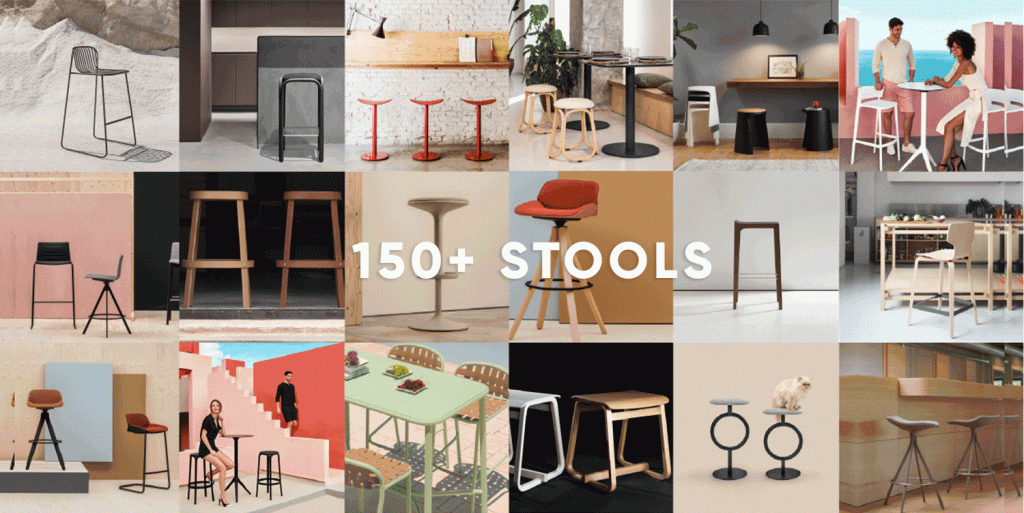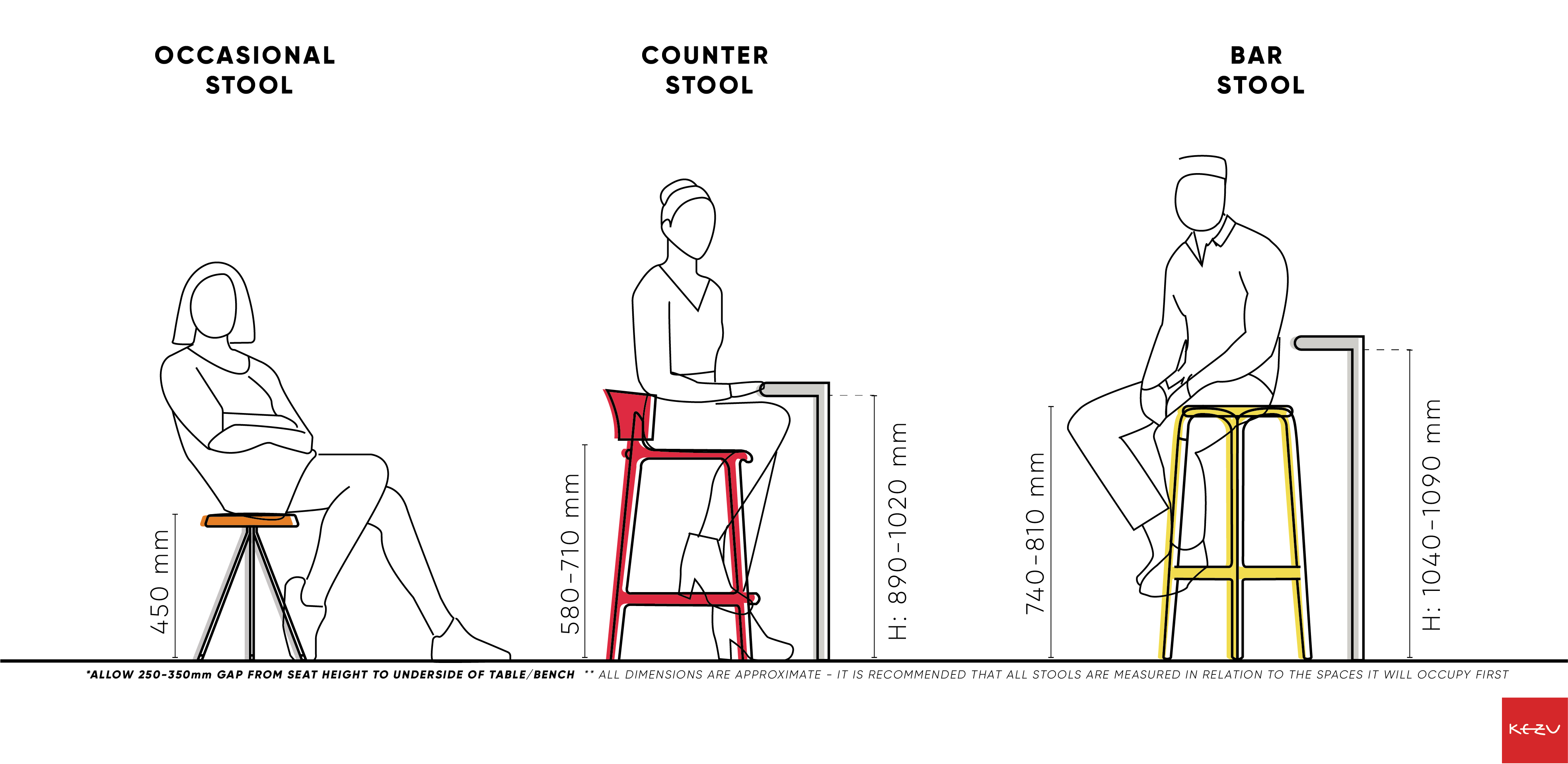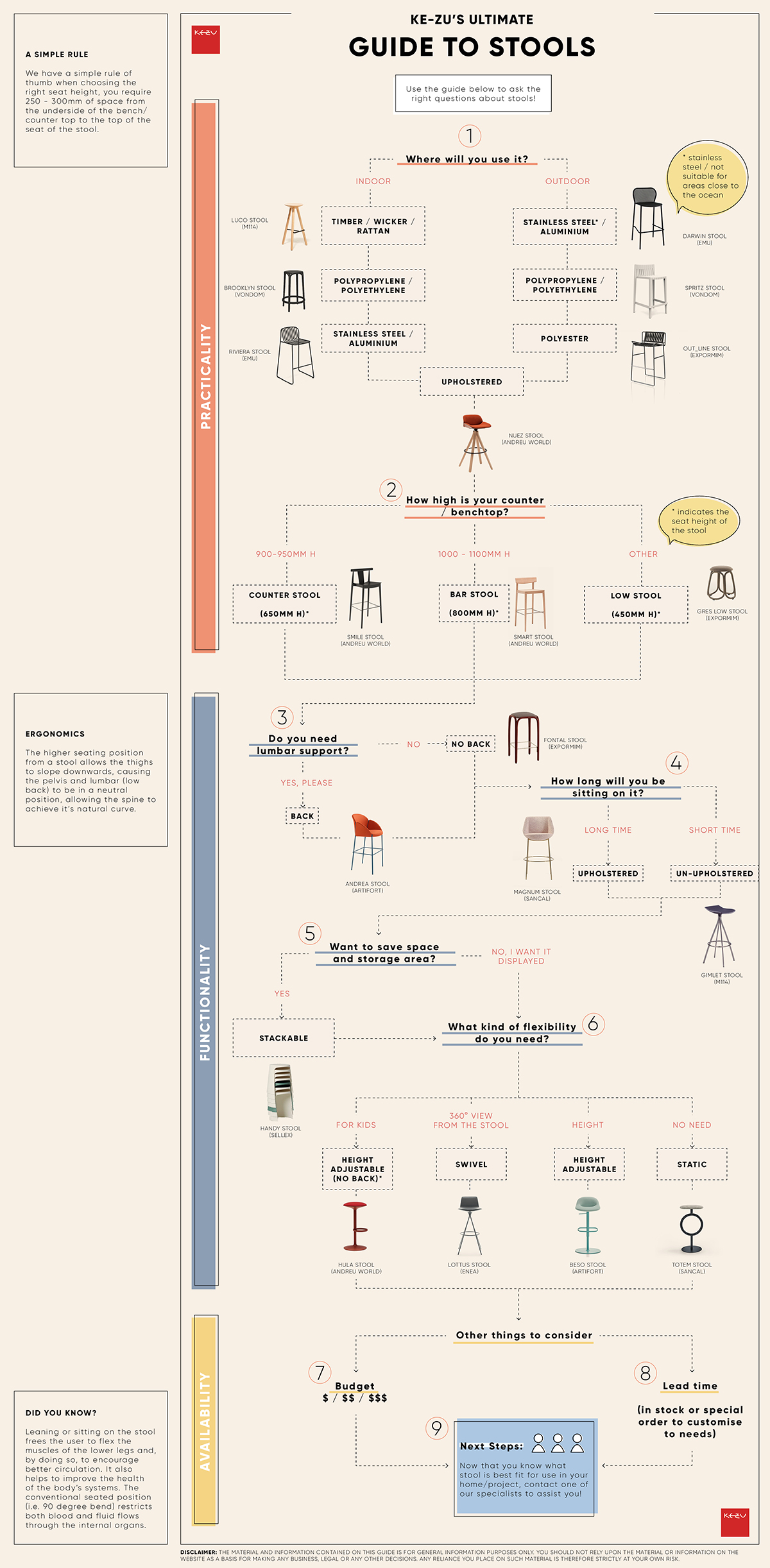GET 20% OFF
By subscribing to our newsletter
SITTING HIGH – but how high is too high for stool height?

When it comes to selecting the right stool, you might be thinking, all stools are the same – but they’re not! You want to strike the right balance between aesthetics and functionality, and it’s easy to get caught up in the detail and make the wrong decision. We are here to help you make the right one.
UNDERSTANDING STOOL HEIGHTS

Auxiliary: with a seat height of 430 - 450mm they are perfect for that extra seat at the table, can double up as a side table or even a footrest
Counters: a standard kitchen bench is approx. 900mm high, which requires a stool with a seat height of 650mm. This is our favourite stool height as your feet still touch the ground while sitting and have a foot ring for those more vertically challenged.
Bars: are generally 1100mm high, which requires a bar stool height with a of 750mm. Sitting at the very highest – the top of the mountain – but it's not everyone’s favourite.
With all of this in mind, we are finding more and more benches and bars being customised to suit the needs of the users of the space and are not being specified at standard heights. This is making the specification of stools even harder.
WHERE WILL YOU USE IT?
The first step in selecting the right stool is considering the space and application of the stool. Is it for the office, the lunchroom, the kitchen bench, indoor/outdoor, a bar, or even a break-out space where you need flexible seating arrangements? Once you know the space, other key factors to consider are:WANT TO SAVE SPACE?
If your answer is yes, choosing a stool without a backrest is a great option allowing you to tuck the stool under and out of the way.GOT KIDS?
Remember stools with backs provide more support and comfort however if children will be using the space think twice about selecting a stool with a back. Although counter-intuitive, a child uses their spatial awareness when there is not a back on a stool and are more likely to perch. Whereas if there is a back, they think it is like a chair and are much more likely to fall to lean back on the backrest and topple off.HOW LONG WILL YOU BE SITTING ON IT?
For long sitting periods, consider a stool with a chair size seat for comfort and the option of an upholstered seat pad, smaller stools provide a minimalist look for smaller spaces and lower backs should not be discounted as it provides back support and allows for better posture.FIXED OR SWIVEL?
A fixed stool is always going to look neat, and there is less chance of the surrounding walls and counters becoming damaged. However, it’s hard to move a stool once seated so a swivel is handy to position it first and then sit down. Swivel allows everyone to sit comfortably as they can adjust the stool to their needs, it enables you to engage in a room where you want to speak with others in the adjoining spaces and some swivel stools with backs have an auto-return feature which keeps the space looking neat and tidy.DO YOU NEED FLEXIBILITY?
Height-adjustable stools are fantastic for desks and benches that aren’t standard heights, sit-to-stand desks as well as for children as they grow.ERGONOMIC BENEFITS?
Leaning or sitting on the stool frees the user to flex the muscles of the lower legs and, by doing so, to encourage better circulation. It also helps to improve the health of the body's systems. The conventional seated position (i.e. 90º bend) restricts both blood and fluid flows through the internal organs.
- 2020
- 2019
- 2018
- 2017
- 2016
- 2015
- 2014
- 2013
- 2012
- 2011
- 2010
- 2009

